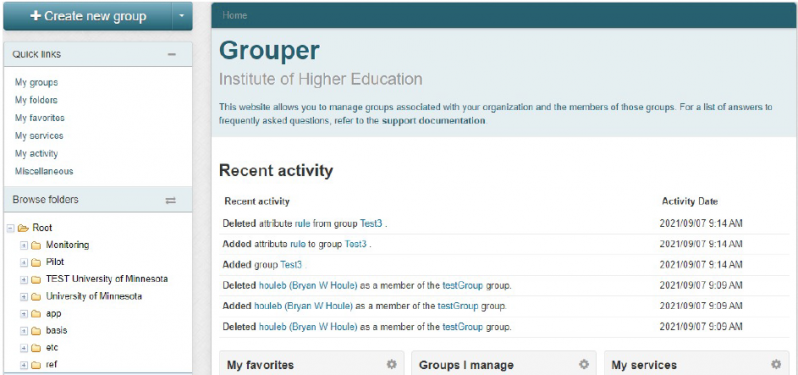Featured Resources
Self-Help Guides
Grouper provides the University of Minnesota departments an easy way to centrally manage access to different data and applications. This is done through the creation of groups in Grouper that are derived from source systems of record. Grouper...
Resources
The Identity and Access Management Center of Excellence (IAM COE) offers a new approach to access management at the University of Minnesota.
The Identity and Access Management (IAM) Center of Excellence helps you set up and use Grouper.
